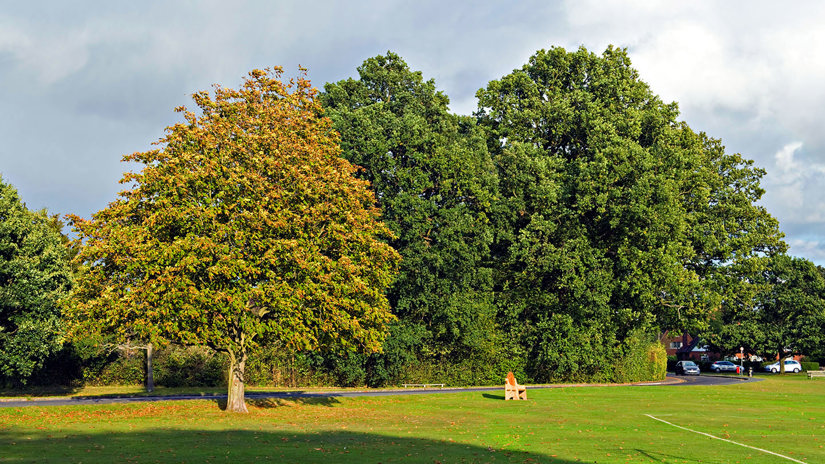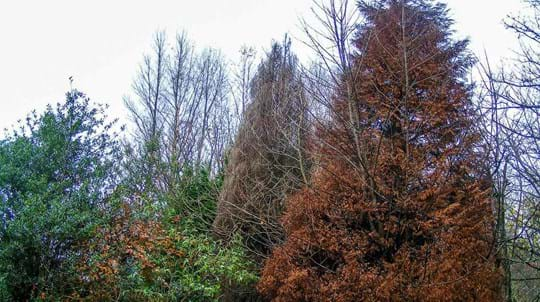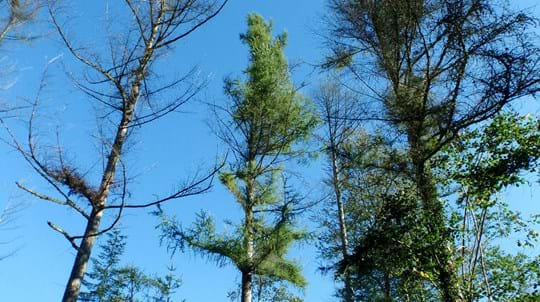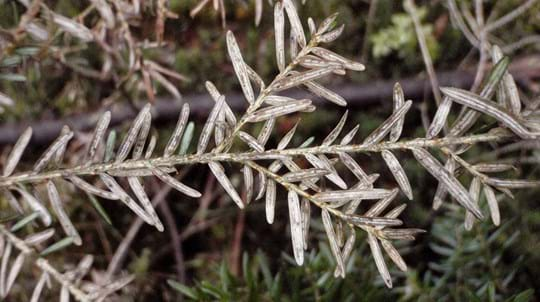
Credit: Forest Research
What happens to the tree?
Once the roots have become infected, the main visible symptom is the browning of foliage and dieback of the crown of the tree. There may also be lesions on the stem or on individual branches.
These lesions are not visible unless the bark is removed. They may be 50cm long and are tongue or flame-shaped, and a cinnamon-brown colour. The inner bark may turn from a healthy creamy-white to yellow. The lesions sometimes also have pockets of resin.







